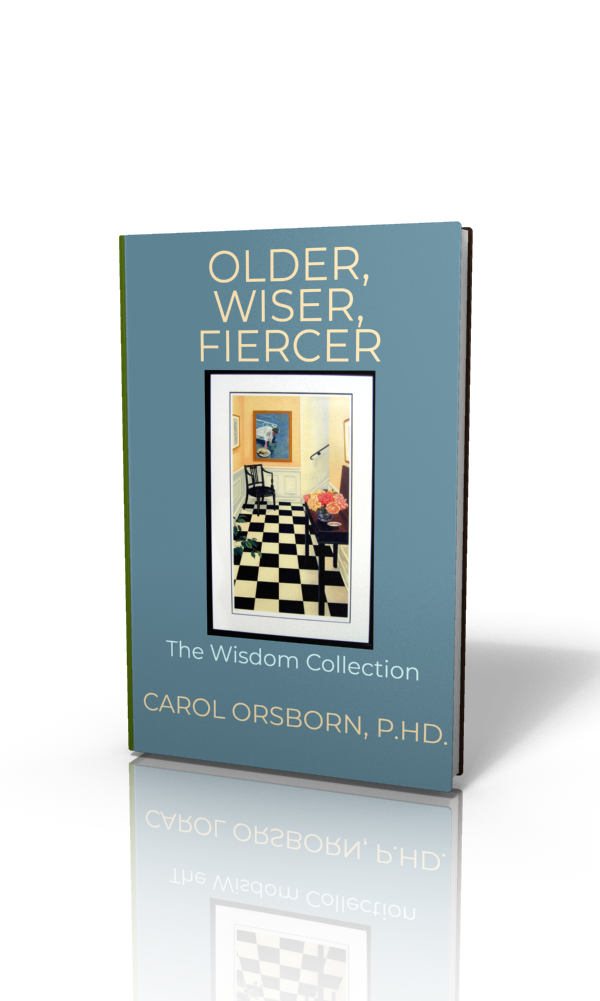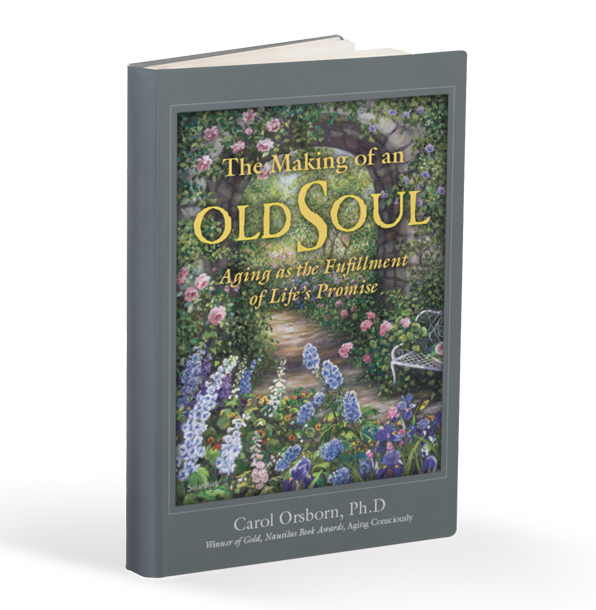“Try to live with the part of your soul which understands eternity, which is not afraid of death. And that part of your soul is love.” –Leo Tolstoy
Dear Friends of Older, Wiser, Fiercer,
Over the past few years, many of you have given me valuable feedback on several of my books-in-progress. Angelica’s Last Breath, inspired by Tolstoy’s The Death of Ivan Ilyich, is the first of these to make its way into print, now available in both e-book and paperback editions. The novel is about a celebrated self-help guru whose confrontation with mortal illness inspires us to ask whether it could be possible to make peace with not only our death, but our past, present and future earlier than one’s last breath— with time to spare? Today’s blog provides a brief account as to how this book came to be.
Please note that all author’s proceeds from the sale of Angelica’s Last Breath go to operating expenses of this blog Older, Wiser, Fiercer , the Conscious Aging Book Club and the Fierce with Age Digest; allowing all my offerings to remain advertising, sponsorship and completely free to you.
I appreciate your support and hope you enjoy this blog. And that you will be interested to learn what became of Angelica as she, like us, has evolved over time!
–Carol Orsborn, Older, Wiser, Fiercer
_______________________
ANGELICA’S LAST BREATH: MY WALK WITH TOLSTOY
Closing in on the age of 70, I read books about death and dying the way in high school I devoured college catalogs, and when expecting, parenting manuals. Studying the next stage of life has always given me a sense of control over the future—a leg up on the unknown. At this age and stage of my life, I know that I am far from alone in failing to break the unrelenting stare of mortality. We’re not just talking theory here, but the merciless reality of facing one’s own death. For all our sakes, I trust that there is some meaning and purpose in responding to this urge to turn one’s gaze forward to the boundary between life and death, no matter the cost.
I learned a lot from my studies, but my unresolved feelings about death—ranging from mild curiosity to outright horror—persisted. Then, one rainy afternoon, thumbing through the spirituality section of my local used bookstore, I stumbled upon a dog-eared copy of Leo Tolstoy’s 1886 classic The Death of Ivan Ilyich. I am perhaps the only person with a doctorate in religion and an expert in the field of spirituality and aging who had somehow made it through her education without ever having been assigned this book, considered by many to be the greatest novella of all time.
The Death of Ivan Ilyich is a quick read—but not an easy one. For such a short book, Ivan Ilyich certainly took his time dying. I disliked Ivan Ilyich, and I was angry with Tolstoy, but the book would not release its grip on me. The third time I picked up The Death of Ivan Ilyich, I realized that my compulsion with this little book stemmed not from logic, but from my intuition that it contained the answers to all my questions about life, death and meaning. Tolstoy inspired this in me not by offering up guidance, but by stripping away defenses. If I could only take the book in deep enough, I would be stripped bare of those hiding places that allowed me to feel like I am better than an Ivan Ilyich and that my death would not be his but something kinder and gentler. But something was blocking me. On my fourth reading, I realized what was in my way.
Ivan is a dull, nineteenth century man whose ideal was to master the conventions of his day. I am a twenty-first century woman whose ideal is to shake up the norms. That was just for starters. It dawned on me that no matter how universal Tolstoy’s insights into death and dying, no matter the brilliance of both his writing and the translation, the modern reader is allowed to keep her emotional distance. That was when I realized that the only way I could span the century and distance between Ivan’s and my world was to adapt his work to my own time and space. In an exercise of imagination, I dove headlong into Ivan’s experience, circumstances and soul, merged it with my own shadows, and began to write a novel centering on the life and death of my fictional character Angela Goodman Banks. The experience of writing felt more like taking dictation, as though Tolstoy and I had formed a bond that transcended eras, geography and religions and that the writer, himself, was guiding me. When I obediently and trustingly followed his lead, I often found myself writing more honestly than ever before, but often in a state of horror, my hands literally covering my mouth as I sat at the computer.
I hadn’t intended Angelica’s Last Breath to be either a confession or a life review, and the facts of Angelica’s life certainly diverge from my own. However, in the process of plumbing the depths of both Ivan and Angelica—two fictional characters over a hundred years and thousands of miles apart, one Christian, one Jewish—I encountered something as surprising as it was profound. That beneath the superficial differences that individuate us—as multifarious as these may be—there is an archetypal template to the trajectory of our lives that transcends centuries, geographies and religious differences.
The opportunity for hope Tolstoy gives us in The Death of Ivan Ilyich comes at the very end of life, and thank God that it comes at all. Without that promise of redemption and salvation, even so tardily delivered, we would be sorely tempted—as Tolstoy was at an earlier stage of his life—to wonder not only about the meaning of life, but whether life is worth living at all. The question I am left with, both in turning the final pages of Tolstoy’s, Ivan’s, Angelica’s and especially my own life story, is whether it could be possible for resolution to be achieved earlier in life, giving us more time to enjoy the freedom that comes from having made peace with not only our death, but our past, present and future– with time to spare?
The archetypal truth shared by Ivan and Angelica strips us bare of our most closely-held illusions and provides a glimpse of what life may be like on the other side of fear of death. More than this, Tolstoy’s genius was to provide a vision of hope that holds the potential to not only transcend our worst fears, but our greatest suffering.
I invite you to join me in the walk I took with Leo Tolstoy and Angelica Goodman Banks as together we learn to become not only fierce with age, but with life.
This blog is an excerpt of a longer article About Angelica’s Last Breath: My Walk with Tolstoy, to read it in its entirety, click HERE
____________________________
To Buy Angelica’s Last Breath in Kindle or Paperback Version, click HERE
To Read an Excerpt of the book, click HERE
For the Biography of the Author and Endorsements, click HERE
To Access the Reader’s Guide, click HERE
To read About the Book, click HERE
________________
TO COMMENT: Please share your thoughts with me about this blog in the comment section below as it is posted at CarolOrsborn.com.
Note: On-going discussion about Angelica’s Last Breath as part of the The Conscious Aging Book Club takes place in the comment section below.
_______________________________
To subscribe to our sister site Fierce with Age: The Free Digest of Boomer Wisdom, Inspiration and Spirituality, click HERE
You can email me directly at Carol@fiercewithage.com.
_______________________________
Carol Orsborn, Ph.D., is Founder of Fierce with Age, the free monthly Digest of Boomer Wisdom, Inspiration and Spirituality. Carol, who earned her doctorate in the history and critical theory of religion specializing in adult and spiritual development from Vanderbilt University, is the best-selling author of 30 books, including her new novel Angelica’s Last Breath and The Spirituality of Age: A Seeker’s Guide to Growing Older (co-author Dr. Robert L. Weber), winner of gold in the category of Consciously Aging, Nautilus Book Awards 2015. Carol’s blog Older, Wiser, Fiercer is available at CarolOrsborn.com.
Feel free to share this providing proper credit to Carol Orsborn
and a link to CarolOrsborn.com.








